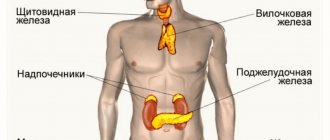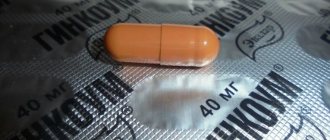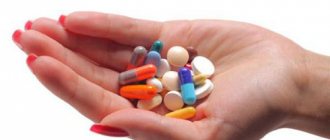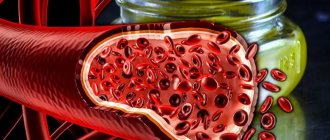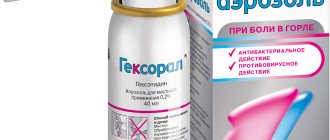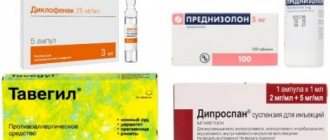Very low calorie diets
For several decades, this approach has been used in medical practice to treat obesity. The goal is to quickly lose the first kilograms (on average, from 1 to 2.5 per week) and maintain as much muscle as possible.
With extreme calorie restriction, muscle loss accounts for up to 25% of total weight loss []. But when you combine diet with strength training and enough protein in your diet, muscles can be preserved, studies have shown.
On this diet, the calorie content of food is no more than 800 kcal/day. At the same time, there is a lot of protein in food - 70-100 g/day or more. Fats can be up to 15 grams, and carbohydrates - 30-80 grams. If weight loss occurs in the clinic, then the diet is replaced with special cocktails and bars enriched with all the necessary vitamins and minerals.
For people with clinical obesity, this diet is a potentially powerful way to quickly lose a few pounds. This is beneficial when obesity threatens health, and also to motivate a person to continue losing weight when he sees quick results []. And in type 2 diabetes, it helps to improve glucose metabolism faster. But a very low-calorie diet works well in the short term, at the beginning of weight loss, and has no benefits for long-term weight loss (a year or more).
How long can you stay on this diet? In clinical practice, doctors use 8-12 weeks, which usually results in a loss of 1.5-2.5 kg per week. After this, you should move on to less strict calorie restriction.
It is not recommended to use such diets on your own. If the excess weight is small, they will not bring additional benefit. If you are obese, you should consult a doctor.
Fasting days for weight loss at home
At the end of the long holidays, everyone needs fasting days in their diet, not only for the purpose of controlling weight, but also to restore the overloaded digestive system and put their well-being in order. Some people use this method of diet regularly (once a week/month) to prevent the appearance of extra pounds and minimize the risks of gaining weight. Watch the video about the effectiveness of fasting days for weight loss:
Diet fasting days. Fasting days for weight loss
Low fat diets
This is a diet in which fat accounts for 15-30% of all calories consumed []. So, on a 1,400 calorie diet, that's about 20-40 grams of fat per day. Although doctors have been recommending that obese patients reduce fat in their diets since the 1950s, official US dietary guidelines included this item only in the 1980s, when sufficient evidence had accumulated on the benefits of reducing fat.
Fat is the highest calorie-dense macronutrient (9 calories per gram of fat), so reducing it is an easy way to make meals less calorie-dense and eat less.
In a controlled study, researchers gave people food that was identical in appearance and taste, but different in the amount of fat. A higher fat diet resulted in weight gain and/or less weight loss [, ].
However, in the long term, “low-fat” diets do not lead to greater weight loss than conventional calorie restriction [, , ]. The detected difference is often less than a kilogram and has no practical significance.
The best diets for weight loss according to reviews
The majority of women, when choosing the optimal diet for themselves, are guided by the number of positive reviews for a particular dietary regimen. There are diets that are universal and help almost an absolute number of people to achieve one hundred percent results. The effect will be quick and impressive, but this species is distinguished by a poor diet and belongs to strict diets, which not everyone can withstand. Let's look at some diets that are the best in the fight against excess weight, according to reviews.
Kefir - lose weight in 3 days
A feature of such a system is strict nutrition according to the allotted time (each meal has its own time for consumption). And the main product that is present throughout the diet is kefir. Efficiency directly depends on what your initial weight is: the higher it is, the more kilograms you will lose. Check out an example of a three-day menu that you can use in your diet for this diet (single meals every day, the interval of each meal is 2 hours):
- When you wake up at 7 am, drink one green tea without sugar (use a sweetener).
- Make yourself a carrot salad: two grated carrots with one teaspoon of olive oil.
- One apple, drink a glass of one percent kefir.
- For lunch, prepare boiled beef (100 grams), you can replace it with white chicken or turkey meat without skin.
- One unsweetened apple.
- Prunes (10 pieces).
- The last meal is at seven o'clock in the evening, it is limited to one glass of the same low-fat kefir.
Buckwheat – minus 10 kg per week
Refers to a very strict diet, its essence lies in eating the main product - buckwheat, which is prepared in the evening: add hot water and wait until it steams. A meager variety of products consists of drinking kefir or green tea. But reviews classify it as one of the most effective and useful dietary regimen systems. Important conditions that must be observed in nutrition:
- It is allowed to eat 5 hours before bedtime.
- If you really want to eat in the evening or you suffer from constipation, one hour before bedtime you can allow yourself one glass of low-fat kefir.
- An important condition for preparing buckwheat: steaming.
- Another product that you can afford is green tea with a weak consistency.
Menu for every day:
- Half an hour before breakfast, prepare and drink a glass of warm water, adding a teaspoon of honey and a couple of slices of lemon.
- Breakfast itself should consist of a small portion of steamed buckwheat and unsweetened green tea.
- Lunch is the same as breakfast.
- Dinner is the same.
- We always remember about water, at least 2 liters per day.
- Blood transfusion - rules. Compatibility of blood groups during transfusion and preparing the patient for blood transfusion
- Symptoms of sunstroke in adults
- Polyps in the stomach
Low carb diets
There is still no agreement among scientists about exactly what amount of carbohydrates makes a low-carb diet. The Institute of Medicine's Food and Nutrition Board has set the "normal" carbohydrate intake range for adults at 45-65% of total calories. Therefore, anything below can be considered low-carb.
In the scientific literature, a low-calorie diet is considered to be a diet in which carbohydrates account for less than 40% of energy [, ]. If we talk about the amount of carbohydrates in grams, then this is everything that is less than 200 grams per day []. Some experts give figures of 50-150 grams of carbohydrates per day.
In any case, meta-analyses (analyses of accumulated studies on a topic) have compared the weight loss effects of low-fat and low-carb diets and found no difference. The results were similar, and no metabolic benefits of a low-carbohydrate diet were found in healthy people [,]. A low-carb diet only works as long as it allows you to limit calories.
There are several explanations for why it is considered particularly effective.
The first is simplicity. The simpler the nutritional rules, the better and longer a person follows a diet and loses weight, as a result [, , , ]. Therefore, “eating fewer carbohydrates” is one of the simple and clear ways to reduce caloric intake. A person removes muffins, donuts, chips, white bread and pastries from food - everything that brings a lot of calories (many of these products also contain a lot of fat), but does not satiate well, forcing you to eat more during the day.
The second is the loss of glycogen and water on a low-carb diet, which reduces up to 3 kg on the scale, although not at the expense of fat.
The third point, which does not apply to carbohydrates themselves, but is always associated with low-carbohydrate diets, is an increase in protein in food.
Diet
The most difficult question about losing weight is how many times a day should you eat? The best option: five times - three main meals and two intermediate snacks in order to suppress the growing feeling of hunger. Snacks should be as light as possible - for example, eat an apple or a boiled egg.
If there is no time for snacks, then it is quite possible to limit yourself to standard breakfast, lunch and dinner, and the last meal should not be later than 19 hours. If hunger prevents you from falling asleep, you can eat a piece of ham, the white of a boiled egg or a little jelly. But kefir, which is so often recommended, is better not to drink at night - it often creates fermentation in the intestines.
Sample diet menu for a week
Monday
- Breakfast: vegetable casserole.
- Lunch: mushroom borscht, meatloaf with stewed carrots, fruit jelly.
- Dinner: carrot and cottage cheese casserole.
Tuesday
- Breakfast: boiled beet puree.
- Lunch: vegetable soup, boiled chicken with carrot puree, fruit jelly.
- Dinner: vegetarian Olivier seasoned with sour cream.
Wednesday
- Breakfast: buckwheat porridge with a little butter.
- Lunch: green cabbage soup with a boiled egg, stewed meat with a side dish of green peas, baked apples.
- Dinner: fruit salad.
Thursday
- Breakfast: baked herring, boiled potatoes
- Lunch: vegetarian borscht, stewed beet salad, boiled beef stroganoff.
- Dinner: zucchini puree, one egg omelette.
Friday
- Breakfast: scrambled eggs from one egg, vegetable salad with a small amount of sour cream or vegetable oil.
- Lunch: beetroot soup, stewed meat with raw vegetables.
- Dinner: boiled fish, stewed cabbage.
Saturday
- Breakfast. pearl barley porridge with a little butter.
- Lunch: lean borscht or soup, boiled meat, stewed beet salad.
- Dinner: vegetarian cabbage rolls.
Sunday
- Breakfast: vinaigrette with a small amount of vegetable oil.
- Lunch: vegetable soup, boiled meat with stewed cabbage.
- Dinner: boiled potatoes and steam omelette.
The daily norm of bread is no more than 150 grams.
High Protein Diets
A high-protein diet is considered to be one where the share of protein is 30-60% of the total calories []. If measured in grams, it is 1.2-1.6 g/kg body weight []. At the same time, twice the official norm for a sedentary person (1.6 g/kg versus 0.8 g/kg) turned out to be more effective for preserving muscle and reducing the amount of fat [, ].
Recently, it was discovered that when combining diet and high-intensity training (interval sprints and strength training), an even higher protein content (2.4 g/kg) was even more effective for muscle growth and fat burning.
Several recent meta-analyses [, , , , ] support the benefits of high protein meals for weight loss and muscle maintenance in dieting.
Another systematic review found that 2.3-3.1 grams of protein per kg of lean body mass may be recommended for lean people who are dieting and doing strength training.
Protein plays a big role in weight loss nutrition. Of all the macroelements, it is the most energetically expensive: the body spends 20-30% of incoming calories on its digestion and absorption (for carbohydrates this is 5-10%, for fats - only 0-3%). Additionally, protein is the most filling of all macronutrients and is better for controlling appetite and managing hunger. So low-carb and low-fat diets are effective because they usually contain more protein.
Keto diets
The keto diet is a diet in which carbohydrates are reduced to 50 grams per day or less. In the absence of glucose, the body turns to alternative fuel - ketone bodies, which it produces from dietary fats and body fats if a person is in a calorie deficit.
It is believed that by giving up carbohydrates, you can speed up fat oxidation and fat burning, because insulin does not interfere with the process. That is, the benefits of cutting out carbohydrates go beyond just reducing calories.
It is also believed that the production and use of ketone bodies creates a unique metabolic state in the body, which should create better conditions for fat loss. In support of this idea, a recent meta-analysis found that a ketogenic diet suppresses appetite better than a regular low-calorie diet.
But despite the large number of studies of carbohydrates and their effect on weight loss, only a few controlled the total amount of protein and calories for the purity of the experiment. And those that were controlled showed no benefit of the keto diet over conventional calorie restriction [, , , ].
Medical nutrition systems and treatment tables
When prescribing therapeutic nutrition, two systems can be used: elemental and dietary.
The elemental system provides for the development of an individual diet for each patient with a specific listing of the indicators of each element of the daily diet. The dietary system is characterized by the individual prescription of one or another diet from a number of previously developed and tested ones. All medical and preventive institutions use a dietary system, while the elemental system is developed specifically for each person by a dietician or nutritionist.
In our country, diets recommended and approved by the Ministry of Health of the Russian Federation for widespread use, developed in the clinical nutrition clinic of the Institute of Nutrition of the Russian Federation with a number designation system according to the nomenclature proposed by M. I. Pevzner, have become predominantly widespread.
This system of therapeutic nutrition, previously referred to as “group”, provides for the existence of 15 main therapeutic diets (tables) and a group of contrasting, or so-called fasting, diets. In addition, some of the main diets (1, 4, 5, 7, 9, 10) have several options, designated by capital letters of the Russian alphabet, which are added to the number of the main diet (for example, 1a, 16, 5a, etc.).
Each diet and its variations are characterized
:
- indications for use;
- target (therapeutic) purpose;
- calorie content and chemical composition
- peculiarities of culinary food processing;
- diet;
- list of permitted and recommended dishes.
Next, we will look at the main dietary tables and the conditions for their purpose.
After the exacerbation of the disease has passed, the patient must continue to follow the general principles of the diet. First of all, this applies to foods that should be excluded from the diet, but other cooking methods can be used. Any, including medical diets No. 1-No. 15, completely exclude alcohol. If one person has a combination of two diseases that require special nutrition, he must follow the principles of both diets.
Table No. 1
Indications
- gastritis with high acidity, duodenal and stomach ulcers for six months to a year after an exacerbation. The diet is prescribed by a gastroenterologist.
Diet goal
– normalization of acidity, elimination and reduction of inflammation, healing of ulcers, erosions, stabilization of the secretory function of the stomach.
Recommended
: pureed soups, boiled pureed vegetables, pureed porridge, boiled lean fish and meat, steamed fish and meat cutlets, boiled chicken without skin, milk, vegetable and butter, cream, non-acidic sour cream and curdled milk, soft-boiled eggs, stale white bread, sweet fruits and berries, fruit and vegetable juices.
Food should be taken four to five times a day, warm.
Table No. 1a
indicated during the period of exacerbation of chronic gastritis with high acidity, with exacerbation of ulcers.
Recommended
: slimy soups, milk, liquid cereals, soft-boiled eggs, soufflé from lean fish or meat, olive and butter, berry jelly, cream, fruit juices, tea, rosehip decoction. Salt should be limited, and liquids should be drunk no more than one and a half liters per day.
Food should be taken warm every two to three hours.
Table No. 1b
indicated for patients with the subsidence of chronic gastritis and peptic ulcers.
Recommended
: in addition to the previously listed products, you can eat steamed fish and meat dishes, pureed milk soups with vegetables, pureed milk porridge, and wheat crackers.
You need to eat six times a day and limit your salt intake.
Table No. 2
Indications
- chronic colitis and chronic gastritis with low acidity.
The purpose of this diet
is aimed at stimulating the normal secretion of digestive enzymes. In addition, during therapeutic nutrition, the motility of the digestive tract improves. Gastrointestinal motility ensures the movement of food through the digestive tract and its mixing with gastric juice.
Recommended
: vegetable and cereal soups in fish, mushroom and meat broths, boiled chicken, lean meat, cutlets, lean boiled fish, lean ham, low-fat lightly salted herring, butter, milk and fermented milk products, mild cheese, porridge, soft-boiled eggs, stale white bread, fruits, vegetables, vegetable and fruit juices, coffee, tea, cocoa, sugar marmalade.
Almost all types of heat treatment are allowed. The diet should consist of approximately 80% boiled or steamed dishes. Food can also be baked, stewed or fried. The main thing is that there is no thick crust. When frying, it is not allowed to use breading in breadcrumbs or batter with flour.
You need to eat it five times a day, preferably pureed.
Table No. 3
Indications
- atonic constipation.
Problems with regular bowel movements are quite common, most often caused by poor diet, sedentary lifestyle and poor quality food. Most working people, as well as students, are exposed to all these factors.
Diet goal
– restore motility of the gastrointestinal tract, improve metabolism, stimulate restoration of the mucous membrane of the stomach and intestines.
You can eat foods containing large amounts of plant fiber, figs, prunes, compotes, fruit and vegetable juices, pureed carrots, beets, dried fruits, kefir, cream, milk, curdled milk, black bread, pearl barley and buckwheat porridge, honey, fried meat and fish, sugar, vegetable and butter. It is recommended to drink plenty of fluids, including sparkling mineral water.
You should not consume cocoa, strong tea, jelly, or slimy soups. If constipation is static, you need to limit foods rich in plant fiber.
The diet is typical for most therapeutic diets. You need to consume 4-6 small servings per day. It is important not to wait too long between meals and eat every 3-4 hours. Portions should be moderate, not too large, but not scanty. The optimal volume of one meal should fit in two palms.
Table No. 4
Indications
- exacerbation of intestinal diseases.
Diet No. 4 is prescribed for intestinal diseases accompanied by frequent and loose stools, acute pain and flatulence. In addition, it is used for colitis and exacerbations of chronic gastrointestinal diseases (ulcers, gastritis, dysphagia). In such conditions, the patient develops dyspepsia, which is characterized by stool upset, abdominal pain, nausea, and cramps. The diet is also aimed at restoring microflora, relaxing muscles, and improving intestinal motility.
Purpose of a therapeutic diet
– ensure maximum relief of the digestion process, and then restoration of the gastrointestinal tract.
You can eat cocoa, strong coffee and tea, stale crackers from white bread, soft-boiled eggs, cottage cheese, semolina and rice porridge with water, boiled meat and fish, three-day kefir, jelly, blueberry and black currant decoction. Salt should be limited.
Basic diet rules
: you need to eat in small portions and often, 4-6 times a day, it is strictly forbidden to go hungry and overeat. Fried and baked foods with a crust are completely excluded from heat treatment. Food can be boiled, steamed, baked in foil, or stewed. These rules apply to all diet options: No. 4, 4a, 4b, 4c.
We recommend
“Vitamins for Heart Health: Strengthening the Heart in Old Age” Read more
Table No. 4a
indicated for colitis. You need to eat the same as in the fourth diet, but you need to limit carbohydrate-rich foods and increase the protein content.
Table No. 4b
indicated for patients with chronic colitis when the disease subsides. Recommended: stale white bread, broth with meatballs, cereal soups with meat or fish broth, pureed cereals, steamed and boiled vegetables, mild cheese, kefir, sour cream, dry biscuits, savory cookies, jelly and compotes of unsweetened fruits and berries, coffee with milk, tea, butter.
You need to eat warm food four to six times a day.
Table No. 4b
indicated for chronic and acute intestinal diseases during the recovery period. This diet is prescribed to provide adequate nutrition in case of intestinal dysfunction in order to restore the function of other digestive organs.
The diet is physiologically complete with limited salt intake and a slight increase in the amount of protein foods. It excludes foods that enhance the processes of putrefaction and fermentation in the intestines, activates its secretion, as well as the secretion of the pancreas and stomach.
You need to prepare dishes by steaming, crushed, or baking or boiling. You need to eat five times a day.
Table No. 5
Indications
- diseases of the biliary tract, gall bladder and liver beyond the acute stage.
Its main goal is to improve and restore the functioning of the liver and biliary tract. In this regard, the indications for prescribing diet No. 5 are: chronic cholecystitis, liver cirrhosis (without decompensation), chronic hepatitis, liver steatosis. In addition, it is prescribed for 14-17 days after removal of the gallbladder. Also, table No. 5 can be used for mild toxicosis during pregnancy.
The diet is prescribed for a long time. At first it is prescribed for about a week with constant monitoring of the patient. If the nutritional system is tolerated normally, the course is extended. The duration of a therapeutic nutrition program is most often one and a half years and depends on the dynamics of the disease.
You should eat milk and fruit soups without meat, cereal soups with vegetable broth, boiled fish, poultry and lean meats, cottage cheese, kefir, milk, flour dishes and cereals, white and black stale bread, sweet berries and fruits, herbs and vegetables. , honey, jam, sugar, fruit and vegetable juices, weak tea with milk. You should limit your intake of fats and salt.
You need to eat five times a day.
We recommend
“Good carbohydrates: list of foods for weight loss” Read more
You cannot consume alcoholic beverages, brains, liver, legumes, lard, spinach, mushrooms, onions, sorrel, fatty meat and fish, baked goods, smoked, spicy and fatty foods, vinegar, spices, canned food, cocoa, ice cream, creams, chocolate, drinks with gas.
Table No. 5a
recommended for chronic pancreatitis.
The diet is the same as for diet No. 5, but you should eat more protein-containing foods and limit foods containing fats and carbohydrates. All food should be steamed, chopped and pureed.
Table No. 6
Indications
- kidney stones and gout.
The diet is used for specific disorders of purine metabolism and excess uric acid in the blood. Table No. 6, prescribed for this disease, reduces the content of uric acid in the blood and almost completely eliminates the entry of purine bases into the patient’s body through food.
The basis of the diet is vegetable and dairy dishes. Products that contain oxalic acid are excluded from the menu and the amount of salt is limited. There should be little protein and fat; if illnesses are accompanied by weight gain, carbohydrates are also reduced.
It is recommended to consume black and white bread, milk and dairy products, honey, sugar, milk and vegetable soups, cereal products, sweet fruits, fruit juices, jam, cucumbers, lettuce, carrots, bay leaves, vinegar, lemon, lean fish and meat, eggs.
In this case, you need to drink at least two to three liters of liquid.
You cannot eat meat soups, kidneys, liver, brains, smoked and fried meat, fish soup, fried fish, herring, lard, sardines, sprats, mushrooms, pates, spinach, sorrel, legumes, cocoa, coffee, alcohol and strong tea.
Table No. 7
Indications
- chronic kidney disease in the absence of renal failure.
At the beginning of therapy, the patient is shown several days of fasting, during which he is allowed to drink only water (300 ml/day). After this, table 7a is used, then 7b, 7c or other diets according to Pevzner.
This diet improves the functioning of the kidneys, helping them eliminate toxins that have accumulated as a result of disruption of the processes of formation and excretion of urine. As a result of such measures, swelling is reduced, blood circulation is restored and the excretory function of the kidneys improves. The diet greatly limits the amount of salt and water, which ensures maximum rest for the kidneys. A patient on the seventh diet should drink no more than a liter of water per day.
In addition, fats and proteins are limited in order to prevent the accumulation of nitrogenous “slags” that are formed as a result of the digestion of protein and fatty foods.
You should eat vegetarian soups, lean poultry, meat, fish, gray and white bread with bran, pasta, cereals, flour dishes, milk and dairy products, cottage cheese, vegetables, herbs, fruits, berries, jam, honey, sugar. You should limit your consumption of sour cream and cream.
Meals should be five times a day.
We recommend
“Vegetable diet: types of diets, their pros and cons” Read more
You cannot drink carbonated drinks, eat creams and cakes, legumes, mushrooms, fish and meat broths, canned food, smoked meats, and pickles. In addition, oxalic acid is prohibited. It also causes complications and can cause exacerbations. Contained mainly in green foods, chocolate, spinach, rhubarb, raspberries, gooseberries, etc.
Table No. 7a
indicated for acute and chronic nephritis in the acute stage. You need to eat boiled vegetables, fruits, flour and cereal products, white bread without salt, tea with milk, butter, sugar.
Meals should be fractional, salt should be completely eliminated.
If uremia develops, you need to reduce your daily protein intake to twenty grams per day, especially vegetable proteins.
Table No. 7b
indicated during recovery from acute kidney inflammation. This diet is transitional from No. 7a to No. 7.
You can eat white salt-free bread, boiled lean fish and meat, and reduce your salt intake.
Table No. 8
Indications
- obesity.
Diet, or, as it is also called “table”, No. 8 is used to treat obesity of all three stages. It can be prescribed by a doctor or used independently. A specially selected diet of diet No. 8 helps to normalize metabolism and break down the subcutaneous fat layer.
The essence of diet No. 8 is to gradually reduce the daily calorie intake. In this treatment program, a sharp reduction in calorie intake and, especially, fasting are unacceptable. A sudden transition to a strict diet does not work in the fight against obesity. To what level you need to cut calories depends on the degree of obesity and physical activity of the person. If your lifestyle is sedentary, the daily norm should be in the range of 1200-1300 kcal. With average loads, you need to gain approximately 1800 kcal. For those who are engaged in hard work or combine diet with sports, you need to consume 2000-2100 kcal per day.
This diet is characterized by a decrease in the energy value of the diet due to carbohydrates, partly fats, while the protein content should be normal. In addition, salt, appetite-stimulating foods and free fluids should be consumed in limited quantities.
You should consume one hundred grams of protein, eighty grams of fat, one hundred and fifty grams of carbohydrates per day.
Recommended products include rye, protein-bran and protein-wheat bread, vegetable soups with cereals, borscht, cabbage soup, beetroot soup, okroshka, lean fish, poultry, stewed, baked or boiled meat, jelly, beef sausages, seafood, milk , cheese, cottage cheese, fermented milk products. Fruits and vegetables can be eaten in any form, but fruit is limited.
We recommend
“Psoriasis: symptoms, treatment and prevention” Read more
Products made from butter dough and high-grade flour, pasta, legumes, cereal and potato soups, fatty fish, poultry and meat, smoked meats, sausages, canned food, sweet berries and fruits, legumes, fatty cheese, cottage cheese, cream, pasta should be excluded from the diet. products, oatmeal and semolina, spicy and fatty snacks, mayonnaise, sauces, spices and herbs.
Meals are split, about 5 times a day, with gradually decreasing portions. The drinking regime consists of 1.5-1.7 liters of water per day.
Table No. 9
Indications
- mild to moderate diabetes mellitus.
With the help of selected nutrition, the patient’s carbohydrate metabolism is normalized during treatment and normal glucose levels are maintained. The energy value of the diet should be reduced by animal fats and easily digestible carbohydrates, and sweets should be excluded. The daily diet should contain about one hundred grams of protein, eighty grams of fat, and three hundred grams of carbohydrates.
You can eat protein-bran, wheat, rye bread, vegetable soups, low-fat fish and meat broths, fish, poultry and lean meats, milk, cheese, low-fat cottage cheese, fermented milk products, cereals, vegetables, potatoes, sweet and sour berries and fruits.
You should not eat fatty and strong broths, rich flour products, salted fish, sausages, semolina, rice, pasta, pickled and salted vegetables, raisins, grapes, jam, sugar, candy, lemonade, and sweet juices.
Gentle heat treatment should be used to prepare dishes. It is forbidden to eat fried food, but all other types of cooking are available: steamed, grilled, oven, water. To add flavor to dishes, it is forbidden to add a lot of salt, bright-tasting spices (curry, hot pepper, turmeric), sugar, honey. To brighten up your diet, you can season your food with garden herbs, basil, and Provençal herbs.
The diet should consist of 5-6 meals, preferably divided into 3 main meals and a couple of snacks. It is recommended to take the same amount of carbohydrates each time. 300 g of slow carbohydrates are prescribed per day, which should be evenly distributed throughout the day.
Table No. 10
Indications
- diseases of the cardiovascular system.
Destination purpose
- help restore impaired blood circulation, normalize liver and kidney function, and slow the progression of atherosclerosis.
You should slightly reduce the energy value due to carbohydrates and fats, limit the consumption of salt and foods that stimulate the cardiovascular system.
We recommend
“Gluten: effects on the body” Read more
You should consume ninety grams of protein per day, a little more than half of which is animal, seventy grams of fat, four hundred grams of carbohydrates. You should eat stale bread, biscuits, unhealthy cookies, vegetarian soups, milk, cottage cheese, fermented milk products, poultry, fish and lean meats, cereals and pasta dishes, baked and boiled vegetables, ripe fruits, jam, honey.
You need to exclude from your diet products made from butter dough, fresh bread, mushroom, fish and meat broths, legume soups, sausages, smoked meats, kidneys, fatty and salty cheeses, salted fish, legumes, pickled, pickled and salted vegetables, fruits containing coarse fiber, cocoa, strong coffee, tea, chocolate.
Table No. 11
Indications
- tuberculosis of bones, lungs, joints, lymph nodes during the period of mild exacerbation or recovery, in the postoperative period, after injuries, with exhaustion after infectious diseases.
The diet has a high energy value with a high content of proteins, minerals and vitamins.
Every day you should consume one hundred twenty grams of protein, one hundred grams of fat, four hundred grams of carbohydrates.
You can eat almost all dishes, except for very fatty poultry and meat, culinary, beef and lamb fats, pastries and cakes with a lot of cream.
There are no special requirements for heat treatment of food, but you need to eat at least 5 times a day. It is recommended to drink as with a normal diet - at least 1.5 liters per day.
Table No. 12
Indications
— people with functional diseases of the nervous system.
The essence of the diet is to alleviate the emotional and physical state by eliminating stimulating foods: salty, sour and spicy foods, spices.
You can eat many foods with the exception of strong soups, spicy seasonings, smoked foods, fried and fatty foods, strong coffee, tea, and alcohol. You need to slightly limit salt and meat.
It is advisable to consume tongue, liver, legumes, and dairy products more often.
Table No. 13
Indications
- acute infectious diseases.
The energy value of this diet is reduced mainly by carbohydrates and fats, while it is rich in vitamins.
You should consume eighty grams of protein, sixty grams of fat, three hundred grams of carbohydrates per day.
We recommend
“Water-soluble vitamins: daily requirements and rules of use” Read more
The diet includes dried wheat bread, lean fish, poultry and meat, low-fat meat and fish broths, mucous cereal decoctions, vegetable soups, cottage cheese, fermented milk drinks, beets, carrots, potatoes, tomatoes, cauliflower, grated buckwheat, semolina and rice. porridge, ripe berries and fruits, marmalade, jam, preserves, honey, sugar, rose hip decoction.
Fresh bread, baked flour products, fatty fish, poultry, meat, fatty broths, smoked meats, sausage, canned food, salted fish, cheeses, full-fat sour cream, cream, whole milk, pasta, barley and pearl barley, millet, onions should be excluded from the diet. , garlic, radish, radish, white cabbage, legumes, cucumbers, cocoa, cakes, chocolate, high fiber fruits.
Table No. 14
Indications
- urolithiasis disease.
It represents a complete diet with a limit on calcium-rich and alkalizing foods.
You can consume ninety grams of protein, one hundred grams of fat, and four hundred grams of carbohydrates per day.
You can eat bread and flour products, broths and soups, fish and meat, cereals, pumpkin, green peas, sour berries and apples, mushrooms, honey, sugar, and confectionery. Fruit, vegetable and milk soups, salted fish, smoked meats, dairy products, vegetables other than those allowed, potatoes, vegetable and berry juices, cooking and meat fats should be excluded.
Table No. 15
Indications
- diseases for which there is no need for therapeutic diets.
This diet is physiologically complete, while spicy and difficult to digest foods are excluded.
You should consume ninety grams of protein, one hundred grams of fat and four hundred grams of carbohydrates per day. You can eat almost all foods, except for fatty poultry and meat, mustard, pepper and refractory fats of animal origin.
However, you should not forget that a therapeutic diet must be prescribed by a doctor. Unlike the principles of healthy eating, which are suitable for almost all people, a therapeutic diet can cause harm, so the main criterion for prescribing a specific diet is an accurate diagnosis.
Intermittent fasting
Intermittent fasting is a temporary abstinence from food that helps reduce your average weekly caloric intake. The most common options:
Alternation of days
This is the most studied option. You are allowed to eat within 12 hours and fast for 36 hours. Or eat for 24 hours and fast for the next 24 hours. Or eat for 24 hours, and eat very little for the next 24 hours (no more than 500 kcal in total). Full compensation for calories does not occur during “fed” days, so the person is still in a calorie deficit and loses weight.
Fasting several days a week
A person does not eat two days a week or severely limits calories. Although it is effective for weight loss (by creating a cumulative calorie deficit over the week), the scientists found no difference in weight loss between a group of people who fasted several days a week and a group of people who maintained a moderate calorie deficit every day for six months.
Limiting food by time during the day
A fasting period of 16-20 hours is followed by a eating period of 4-8 hours a day. The most studied form is Ramadan, during which believers fast from sunrise to sunset for about a month.
In general, intermittent fasting and regular calorie deficit eating are similar in effect. Both lead to weight loss, but in the case of prolonged fasting, there is a greater chance of losing muscle along with fat.
